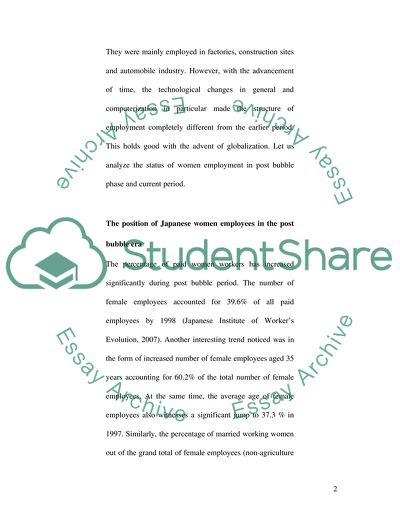Cite this document
(“The Position of Japanese Women Employees In Post-bubble Era Essay”, n.d.)
Retrieved from https://studentshare.org/gender-sexual-studies/1420228-the-position-of-japanese-women-employees-in-post-bubble-era
Retrieved from https://studentshare.org/gender-sexual-studies/1420228-the-position-of-japanese-women-employees-in-post-bubble-era
(The Position of Japanese Women Employees In Post-Bubble Era Essay)
https://studentshare.org/gender-sexual-studies/1420228-the-position-of-japanese-women-employees-in-post-bubble-era.
https://studentshare.org/gender-sexual-studies/1420228-the-position-of-japanese-women-employees-in-post-bubble-era.
“The Position of Japanese Women Employees In Post-Bubble Era Essay”, n.d. https://studentshare.org/gender-sexual-studies/1420228-the-position-of-japanese-women-employees-in-post-bubble-era.


